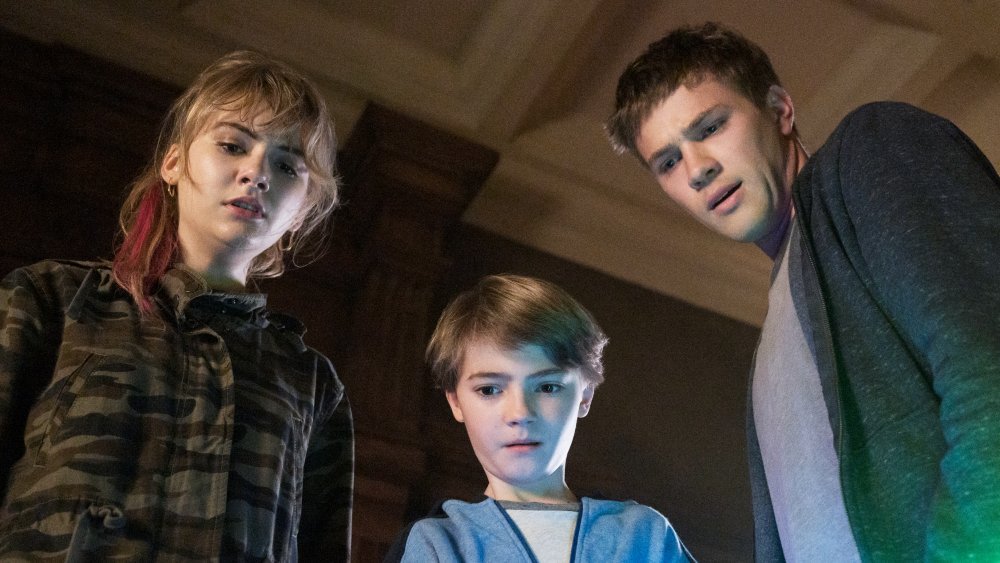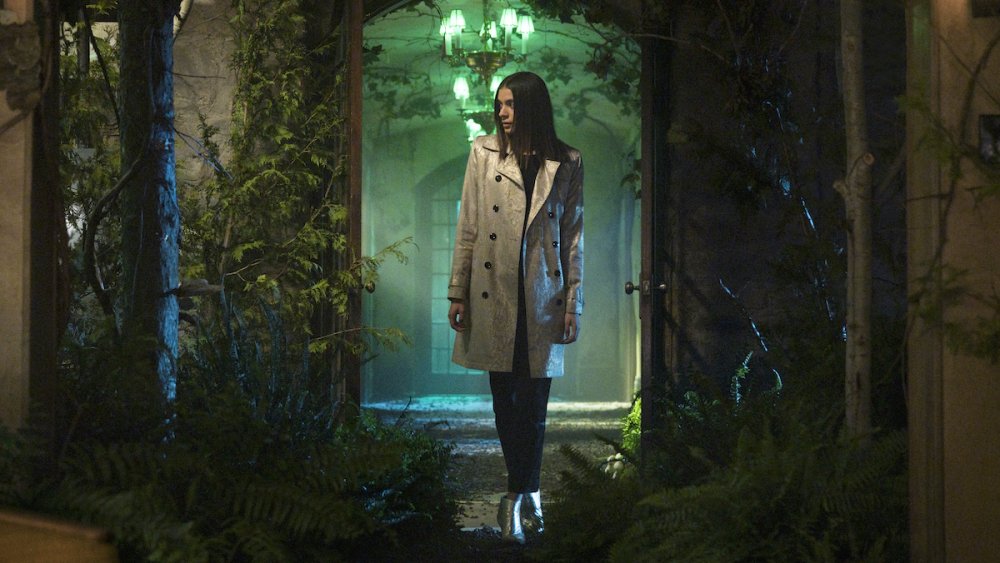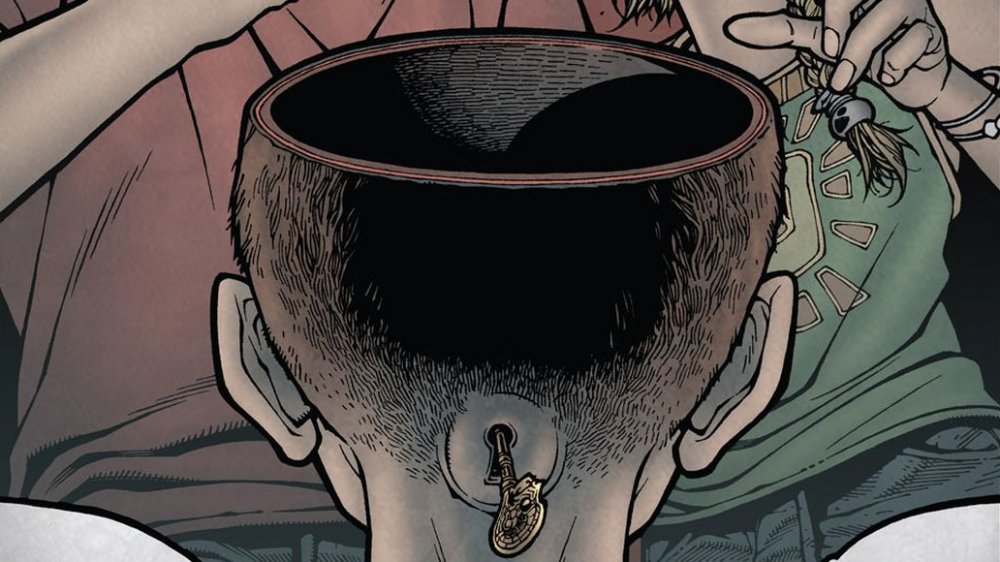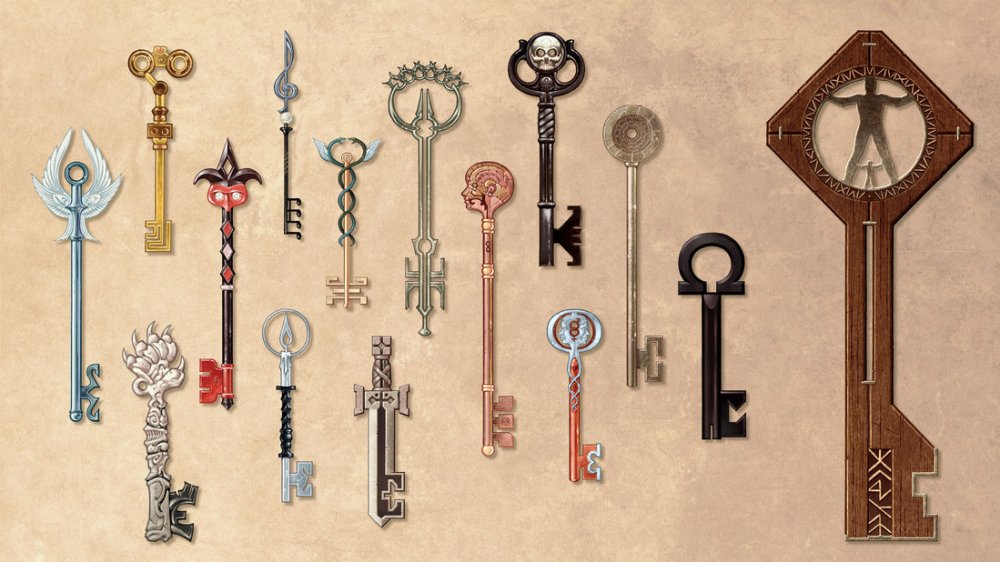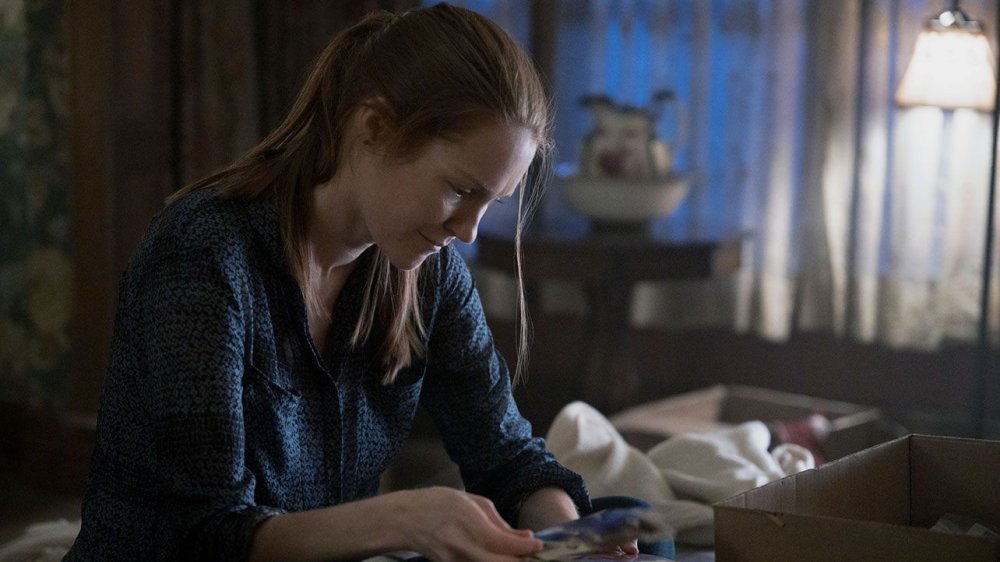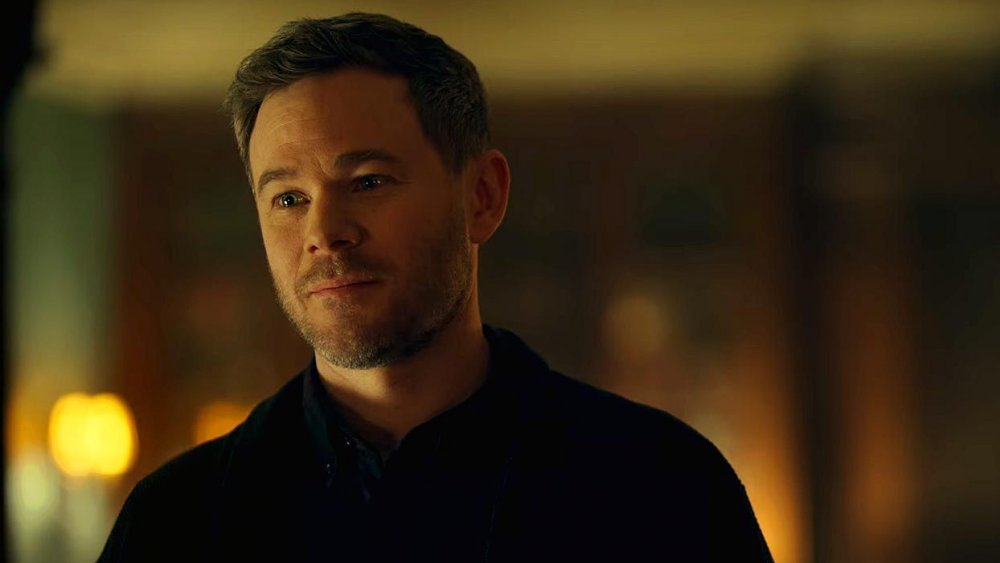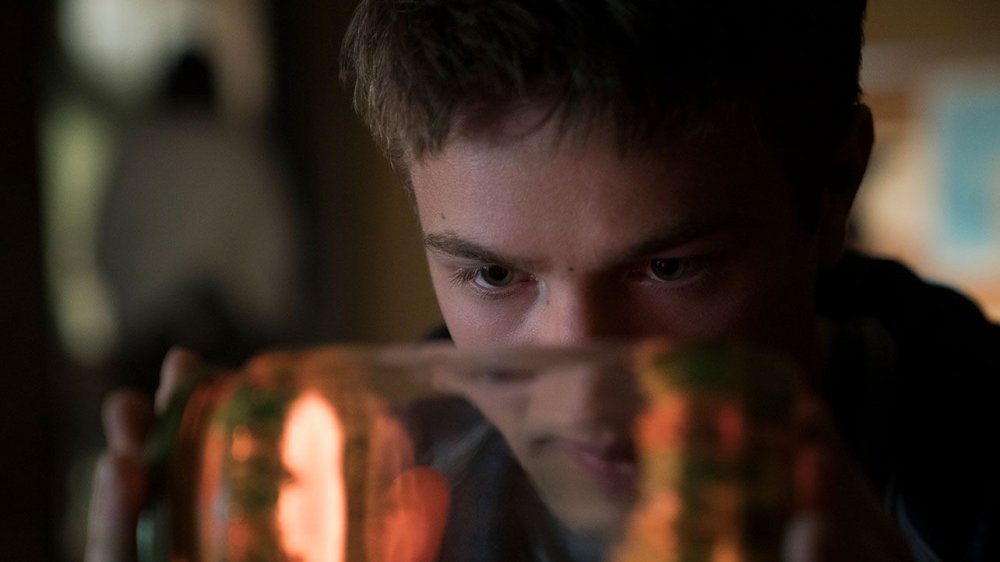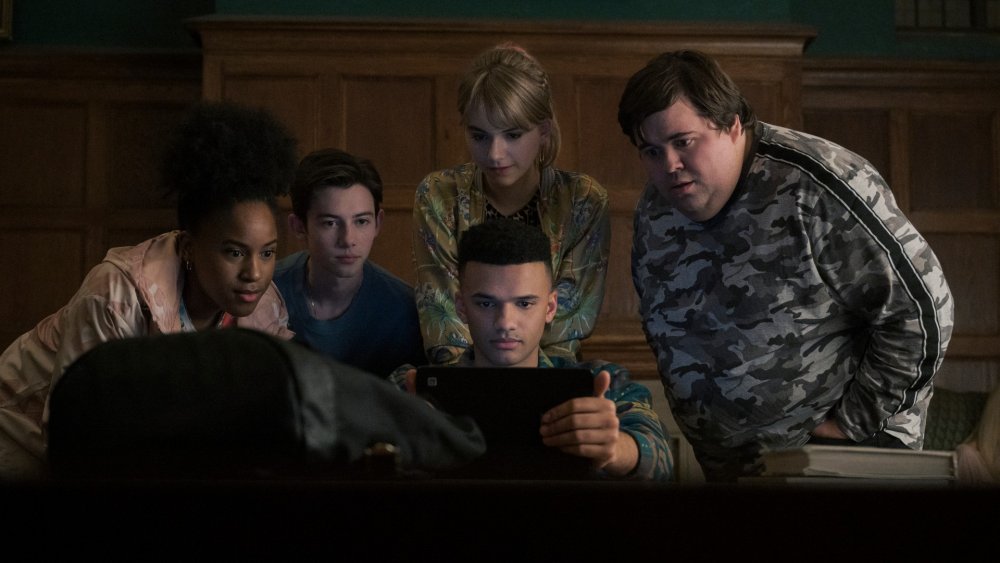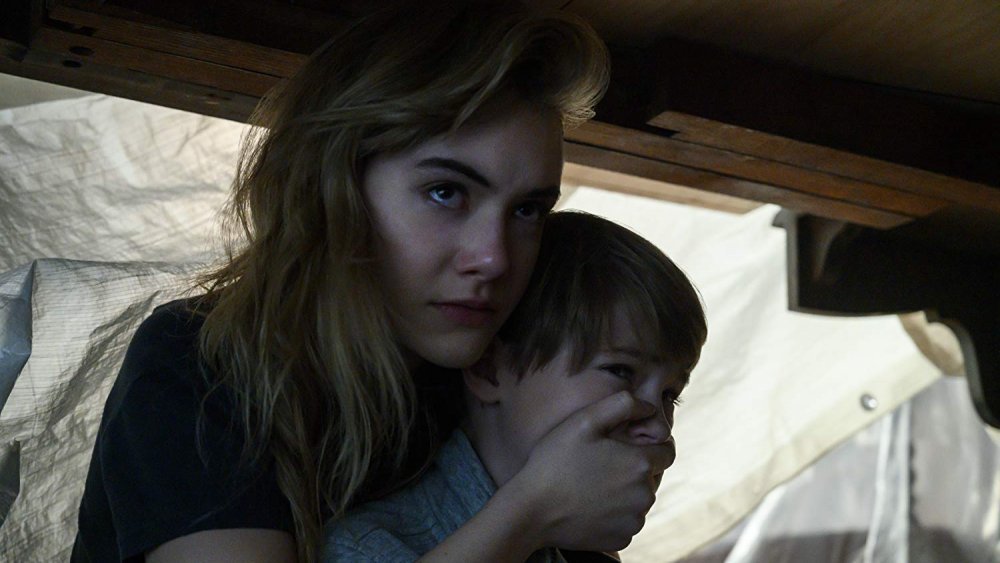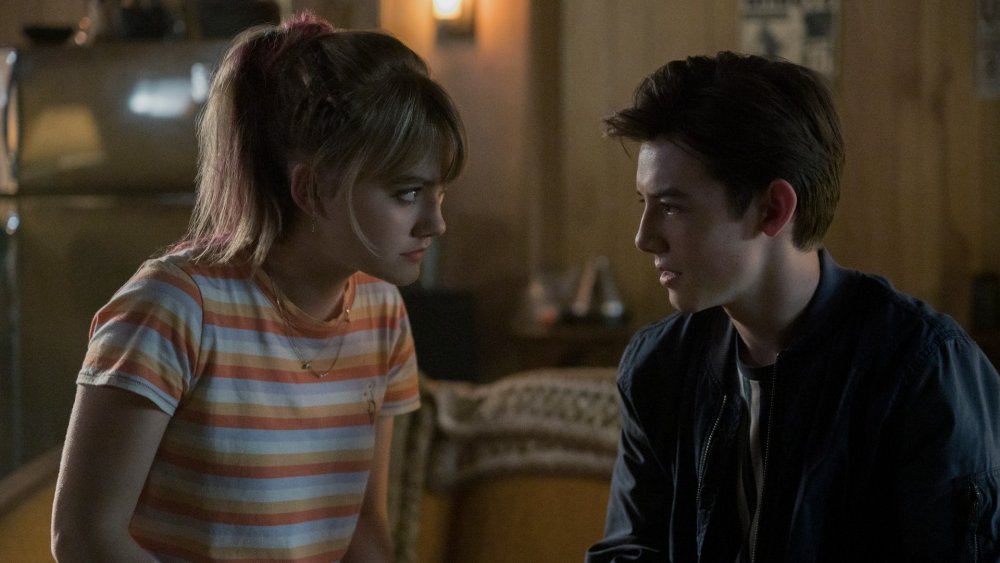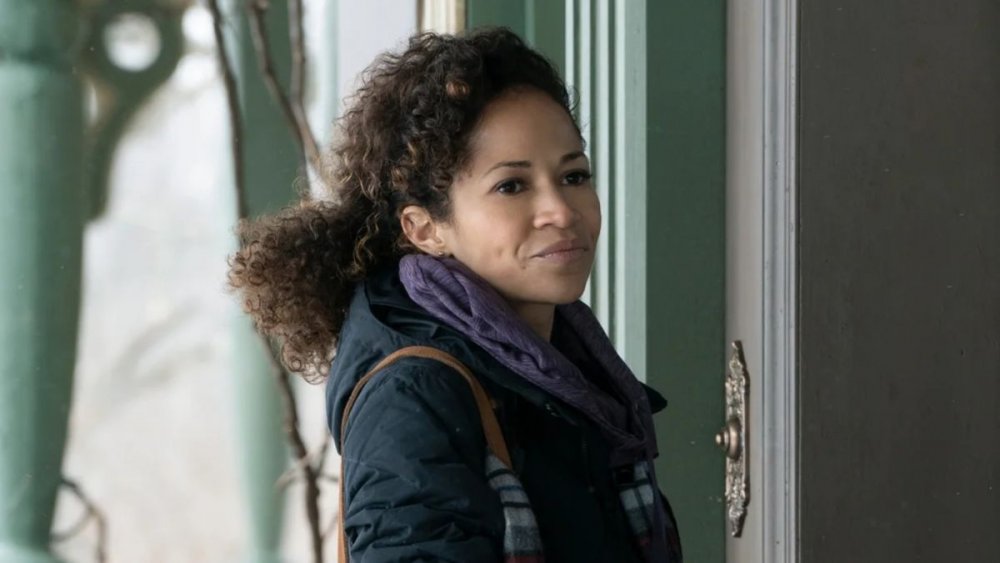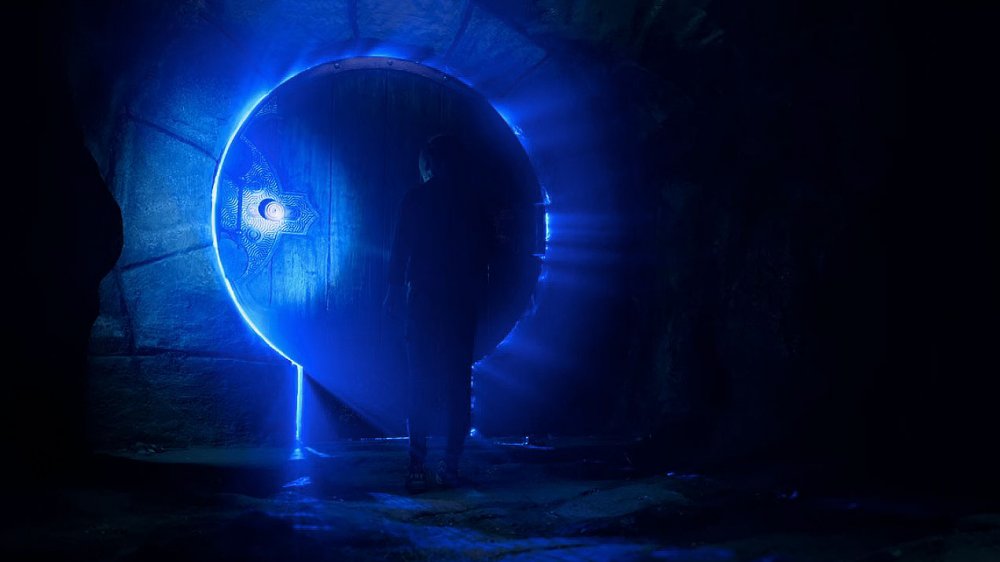The Biggest Changes Netflix Made To Locke & Key
Ever since Stranger Things basically blew up the television world in 2016, audiences have been searching around for that next fix that would scratch their itch for both horror and adventure. Into that fray leaped Locke & Key, Netflix's 2020 series featuring the trials and tribulations of the precocious Locke children as they explore their mysterious and mystical new home. This was no Johnny-come-lately, however, seeing as it was adapted from the popular comic of the same title by writer Joe Hill. (Hill, it should be noted, has something of a heritage in horror, being the son of the master of the art — in written form, anyway — Stephen King.)
An effort to adapt Locke & Key had been bouncing around for years, with a pilot having been produced by Fox and, at one point, a feature film trilogy proposed by Universal Pictures. Netflix was finally able to seal the deal, but in the process, they made some major changes to the story and characters. While that's common in most translations from page to screen, some of these alterations were more significant than others. Grab your Anywhere Key, and let's unlock the mystery of the changes that made Locke & Key on Netflix its own unique beast.
It's fantasy vs. horror in Locke & Key
One of the key (zing!) elements that characterizes Hill's popular comic series is its juxtaposition of a coming-of-age story for the Locke children with very dark, and sometimes downright grotesque, horror. While it certainly leans into the fantasy element that comes with Keyhouse and the fact that its main characters are children, it also leans heavily into the scarier side of things, including ample body horror and lavishly rendered gore. The ability to somehow strike that balance is one of the things that has made the print version of Locke & Key resonate with so many.
The show, meanwhile, makes no bones about the fact that it's much more interested in the fantasy that comes with a house full of mysteries than it is in horror. There are certainly scary elements and thematic darkness, but the scales are definitely tipped toward adventure, and the more visceral visuals are replaced with more prosaic depictions of similar concepts. This was by design, as executive producer Carlton Cuse has gone on record saying the goal in production was to create a ratio of "three cups fantasy to one cup horror."
How the Head Key works
Nowhere is the shift between the comic and the series more visually represented than the way in which the Head Key is depicted. In both the books and the show, the Head Key allows the user to enter a person's mind (or their own) and access their memories, emotions, and mental state. The comic version, however, is one of artist Gabriel Rodriguez's most distinctive creations, actually popping the top off of someone's head and creating a spectral version of the user, allowing them to peer directly into their own minds. It's an effect that works tremendously on the printed page.
In live action, though, it would raise all sorts of issues. The VFX technology certainly exists to create that effect, but it doesn't come cheap without looking cheap. Meanwhile, the physical element of actually removing the top of a character's head didn't jibe with the tone that the show's creators were shooting for. So, they opted for a more symbolic approach, changing things so that the Head Key creates a door through which the user can walk into a representation of their own personal headspace. It's a creative approach, for sure, and one much more in line with the overall feel that Cuse and his cohorts were aiming for.
New keys, new doors
Probably the most intriguing part of the Locke & Key canon is its lineup of magical keys. Linked to the Lockes and their ancestral home, Keyhouse Manor, they're the spark for the story's magic, and there are, put simply, a whole heaping bunch of them, all with different abilities. As robust as the comic's key collection was, however, the series wasn't content to just mess with existing keys. Instead, the showrunners set out to craft a few of their own, with powers that played into elements only seen on-screen.
There is, for example, the Identity Key, which allows its user to alter their appearance. It's actually a mash-up of two separate keys — the Skin Key and the Gender Key — from the source material. There's also the Matchstick Key, which allows the user to start fires ... so, okay, it's a lighter, but a really fancy, magical lighter. Finally, the show offers up the Mirror Key, which opens a portal to "the Prison of the Self," in which the demonic Dodge tries to trap Bode and his family.
Nina Locke gets reimagined
Nina Locke is the mother of the Locke children, widowed when her husband, Rendell, is murdered. She and her brood relocate to Massachusetts and a new home in Keyhouse Manor, thus setting off all the events of both the show and the comic. While certain elements of Nina's story are consistent from page to screen, the character was changed fairly dramatically for the Netflix series, making her more sympathetic and providing her more of an arc throughout the season. It's one of the bigger alterations from the source material and one of the most welcome.
In both comic and series, Nina struggles with alcoholism, but whereas she spends most of the comic's story fully immersed in her addiction and oblivious to the danger her children face, TV Nina is six years sober and much more engaged both in her children's lives and the mysterious events in which they find themselves entangled. This makes her relapse much more devastating when it occurs, especially since it comes as she's digging into her husband's passing and why his and his friends' deaths occurred under such mysterious circumstances.
Duncan is dramatically diminished
Nina Locke plays a much bigger part in the Netflix series than she does in the comic, but that creative decision came with some collateral damage. See, as Nina became a bigger character in the show, the role of Duncan Locke was significantly reduced. As Rendell's brother and uncle to the Locke children, Duncan has a significant impact in the proceedings in the comics, both in his childhood and as the last surviving person with a connection to Keyhouse Manor after Rendell's death. He frequently appears as a voice of guidance and comfort for Tyler, Kinsey, and Bode, and he's a central figure in the struggle against Dodge.
But with the Nina Locke of the show no longer subsumed by her alcoholism and being much more present in her children's lives, Duncan's work as mentor would be redundant. As such, the character is much less present than he is in the source material, and his significance to the story is vastly less than it was in the comic. In particular, he plays next to no part in the effort to take on Dodge, which is left, in the show, to the Locke kids and their friends.
Locke & Key tries on a different Tyler for size
When it comes to adapting a comic book for a TV series, characters will often get a makeover before making their way to the screen. For example, take Tyler Locke. On the page, eldest brother Tyler is portrayed as something of a typical teenager. As a football player, he's on the jock side, and he's depicted as having a physicality that matches the archetype. It's not just his physique, though, as he's also prone to extreme emotions, which is fitting for a young man carrying the emotional weight of having witnessed (and feeling responsible for) his father's murder.
The differences in TV show Tyler come down to casting, as actor Connor Jessup, who plays the character in the series, doesn't quite fit those descriptors. The show's producers enjoyed Jessup's work enough that they cast him despite his lack of resemblance to the source version, and then they leaned into the more introspective qualities that the actor brought to the table. It's generally a smart idea to play to your cast's strengths, but it does lead to a bit of shock for anyone expecting to see the comic book version of Tyler duplicated on the screen.
Locke & Key serves up the Savini Squad
When adapting Locke & Key, the showrunners made quite a few changes to the Locke family, but the makeovers didn't stop with the main characters. They also upgraded Kinsey's friends — the group that she falls in with after some difficulty fitting in at school and who become entangled in the Locke' battle against Dodge. Nowhere is this more represented than in the character of Scot, whose appearance as a tattooed punk is washed away in his TV representation.
Instead, Scot and his two cohorts are hardcore cinephiles who are, when we meet them, working on making their own horror film. They've also, in a nod to King's Losers' Club from It, given themselves a name: the Savini Squad. If that name sounds familiar, you're probably something of a movie buff yourself, since it references iconic horror VFX creator Tom Savini. Savini even gets a cameo in the show, playing a key maker at a local hardware store.
Kinsey's Fear takes a different form
In the comic, one of the effects of opening someone's head with the Head Key is that you can actually reach in there and muck around. Early in the run, Kinsey makes use of this ability, actually removing her Fear and her Tears, leaving her incapable of feeling either afraid or sad. As depicted by Rodriguez, the two emotions are sized appropriately to fit inside Kinsey's head, no bigger than, say, a mouse, and they look like terrifying little monsters. She ends up placing them in a soda bottle for safekeeping.
With the show's Head Key working differently, the producers decided that a much different direction would make a lot more sense. Instead of a tiny creature, Kinsey's Fear is a fully formed, human-sized creature, which she takes and buries in the woods until digging it up later to attack Sam Lesser. To really drive home the otherworldly aspect of the emotion, the show's producers hired a dancer to play the part, and they had her create a fluid, creepy movement style. Couple it with makeup artist Sean Sansom's work in creating face molds of actress Emilia Jones, who plays Kinsey, and you have an impressive incarnation of a character's emotion brought to life on screen.
Dodge's disguise takes a turn
Perhaps the biggest change the show makes to a character's form and function comes with the demon Dodge and its method of infiltrating the lives of the Locke children. In the comics, the entity possesses one of Rendell Locke's friends, Lucas, and causes no end of havoc before being trapped in the Well House. After escaping, it retakes the form of Lucas, updates to a more modern look, and befriends the Locke children under the name Zack, all the while leaving a trail of murders to eliminate anyone for whom his appearance rings any bells.
The show wipes this strategy away and replaces it with something much more subtle. Dodge does take the form of Lucas at one point but doesn't appear to buddy up to the Locke children, other than in one failed effort to seduce Tyler while in female form. All of this, however, is just a setup for a big twist (spoiler alert), as it's revealed at the end of season one that Savini Squad member Gabe has actually been Dodge for some time. It's a clever, well-handled twist, and the montage through which it's revealed is one of the season's better moments.
Ellie Whedon's truth and tragic ending
One of the most significant non-Locke characters in both versions of the story is Ellie Whedon. Lucas' girlfriend and a childhood friend of Rendell's, she ends up deeply entrenched in events surrounding Dodge and the keys. In the comics, the demon leaves a fragment of itself inside Ellie's head, using it and her love for Lucas, whose form it had taken, to force Ellie to do its bidding. In the end, it murders her in a most brutal fashion.
The Ellie of the show is a much more tragic figure. Her servitude to Dodge appears driven entirely by fear rather than by any lingering love for Lucas, but while she looks for a way out, she can't seem to free herself from the demon's threats. In the end, however, she fights back, revealing the history of the keys and Dodge's plans to the Locke children. Unfortunately, the victory is short-lived, as Dodge pulls a bit of trickery at the end by using the Identity Key to change Ellie's appearance to that of the form it'd been using, leading the Locke children to unintentionally banish Ellie, instead of Dodge, to the other side of the Black Door.
What's beyond the Black Door
The Black Door is the Locke & Key canon's most important element, and it's central to the entire story of Rendell Locke, his children, and their generations-long struggle to contain Dodge. Situated deep within the Drowning Cave and directly — albeit far — beneath Keyhouse Manor, it's a portal to another dimension where demonic horrors reside. Opening the Black Door using the Omega Key allows demons to enter our world, where they either quickly find a host or die and turn to Whispering Iron, which is used to make magic keys.
In the comics, the Black Door has a hypnotic quality, causing anyone in its presence to want to open it. Once opened, it reveals a hellscape of Lovecraftian horror, populated by eyeball-shaped demons who inspire mayhem and murder when they enter our world. In the show, the hypnotic effect is no longer a factor, as several characters come into contact with it and feel no temptation. What's more, the show actually sees the door opened by the Locke children, whereas it only happens in a flashback in the comic. Finally, when the door is opened in the series, what's behind it appears as a sort of blue glow, in keeping with the show's skew toward fantasy over the kind of horror represented by the comic's version of the door's denizens.
